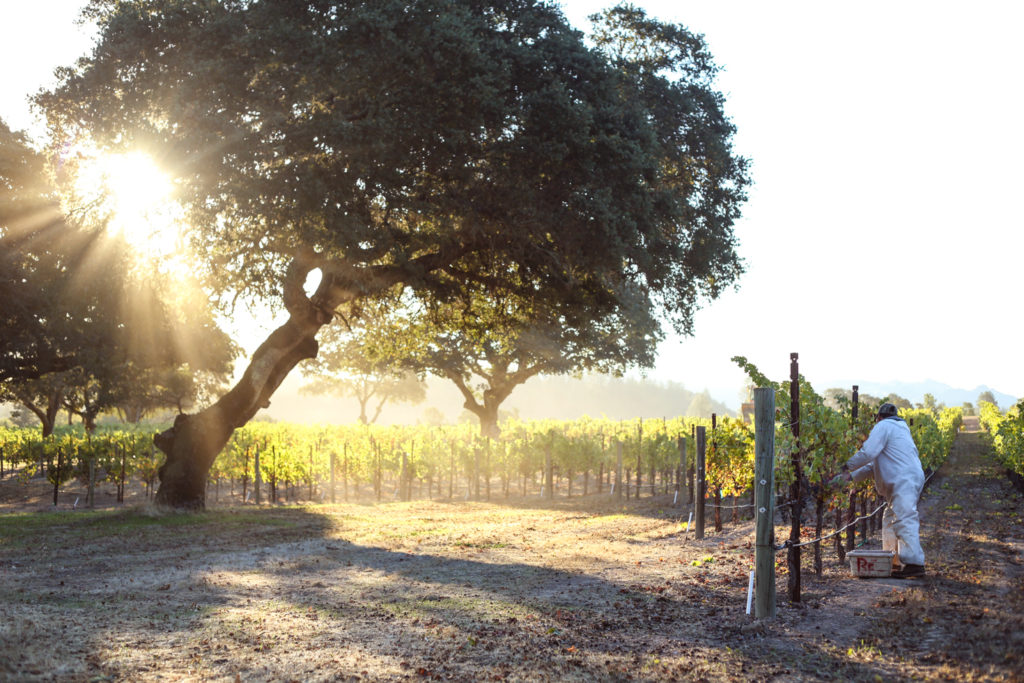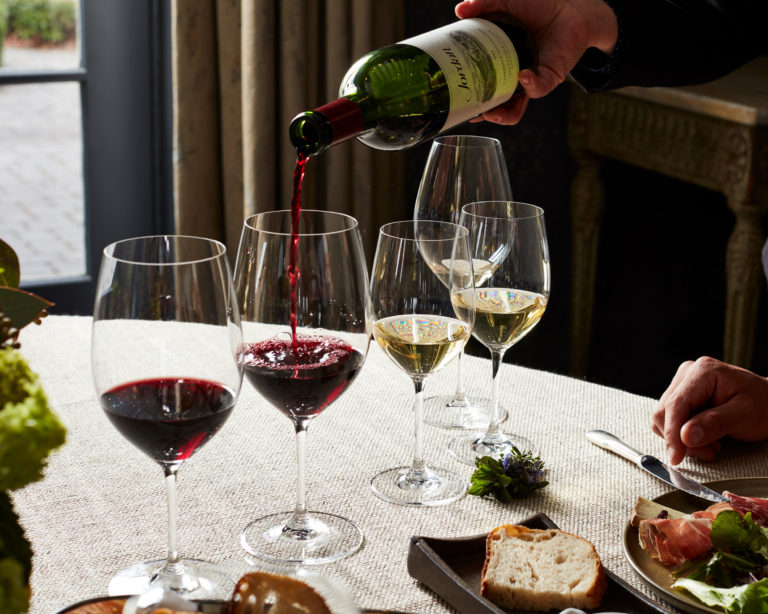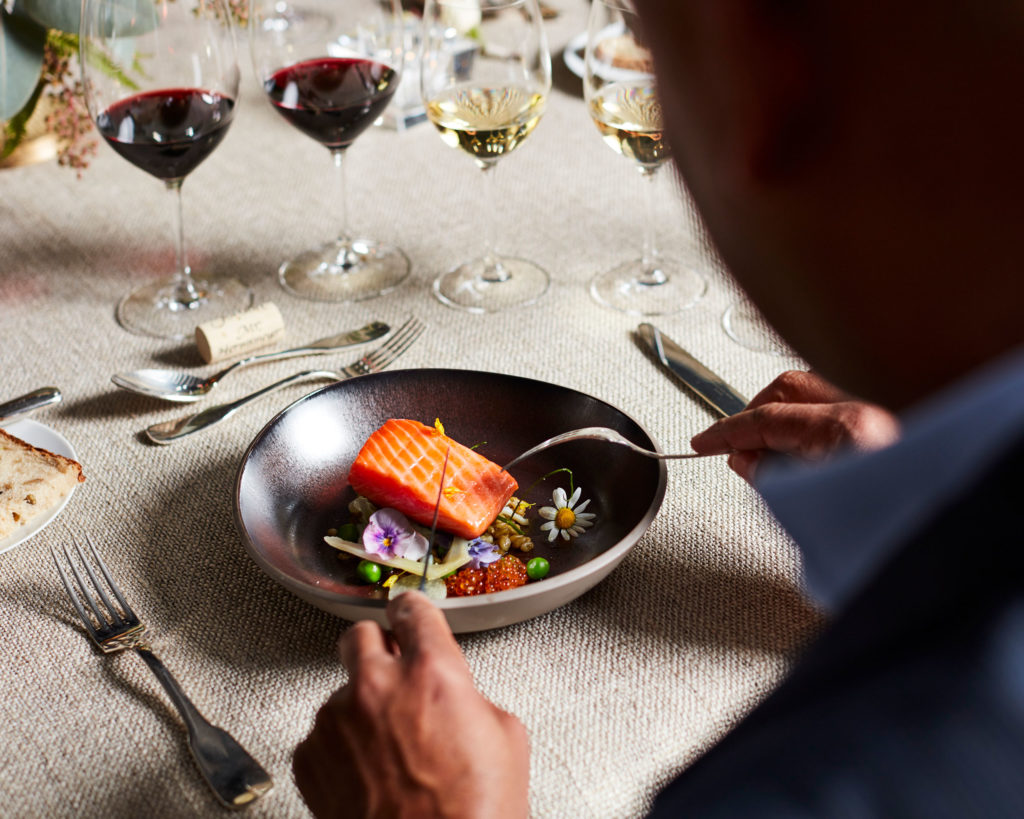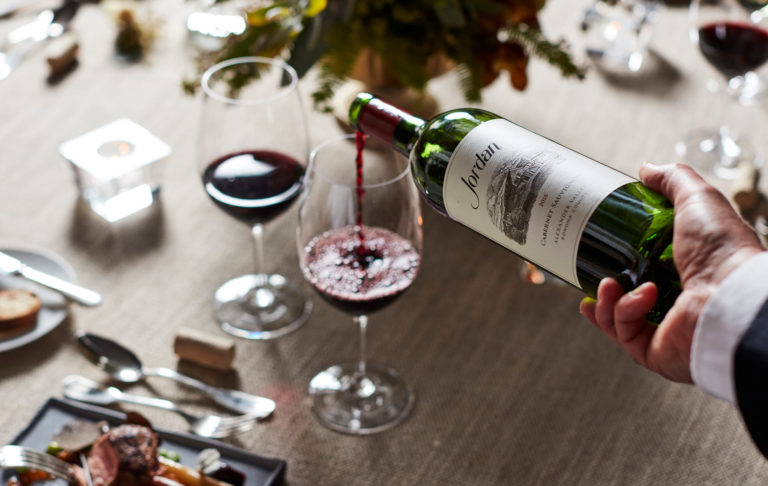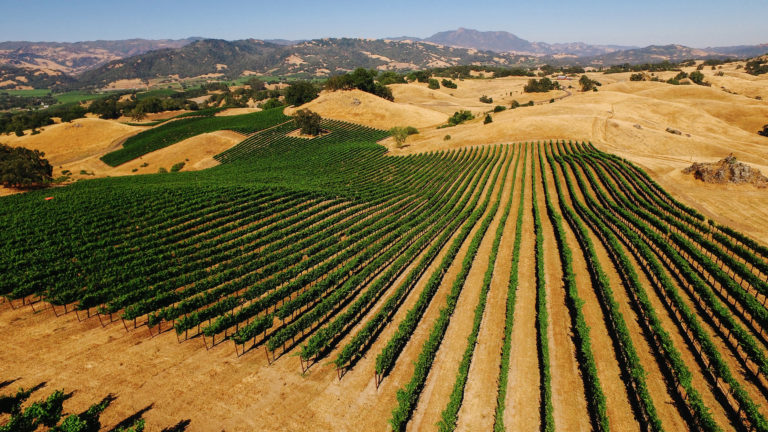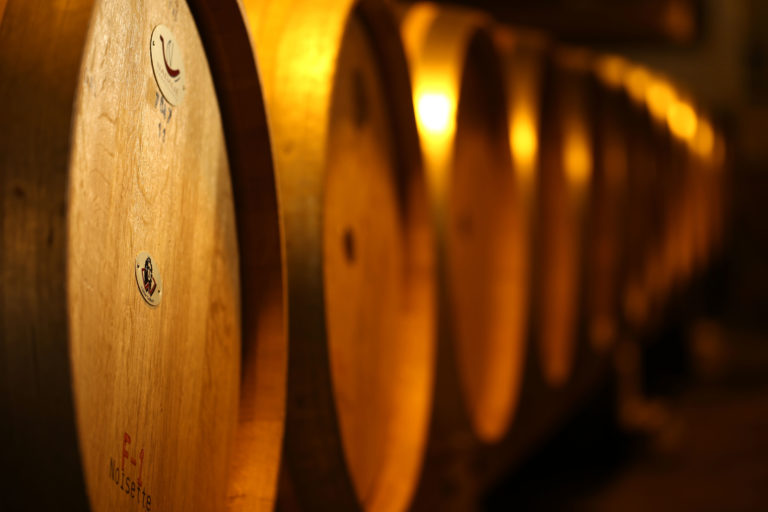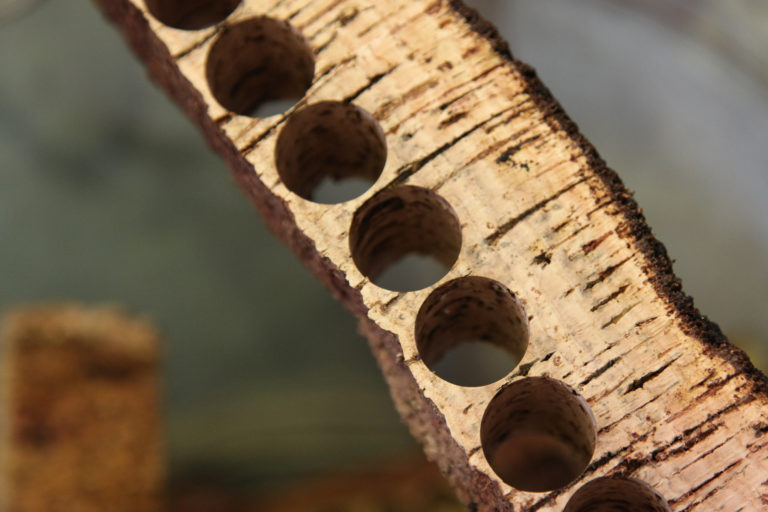
That’s how we make beautiful wines every year, not just in the great years. Grapes that don’t meet our expectations of taste are sacrificed in the vineyard, or declassified and sold at the winery—there is only one bottling of Jordan every vintage, and it only includes the best fruit. Investments in research and technology are ongoing in the vineyards and the cellars. Paying top dollar for grapes, barrels, corks and winemaking equipment is central to the remarkable consistency of Jordan wines—as is taking care of our people. These tenets have helped us remain one of the top cabernet sauvignon brands in America for more than four decades.
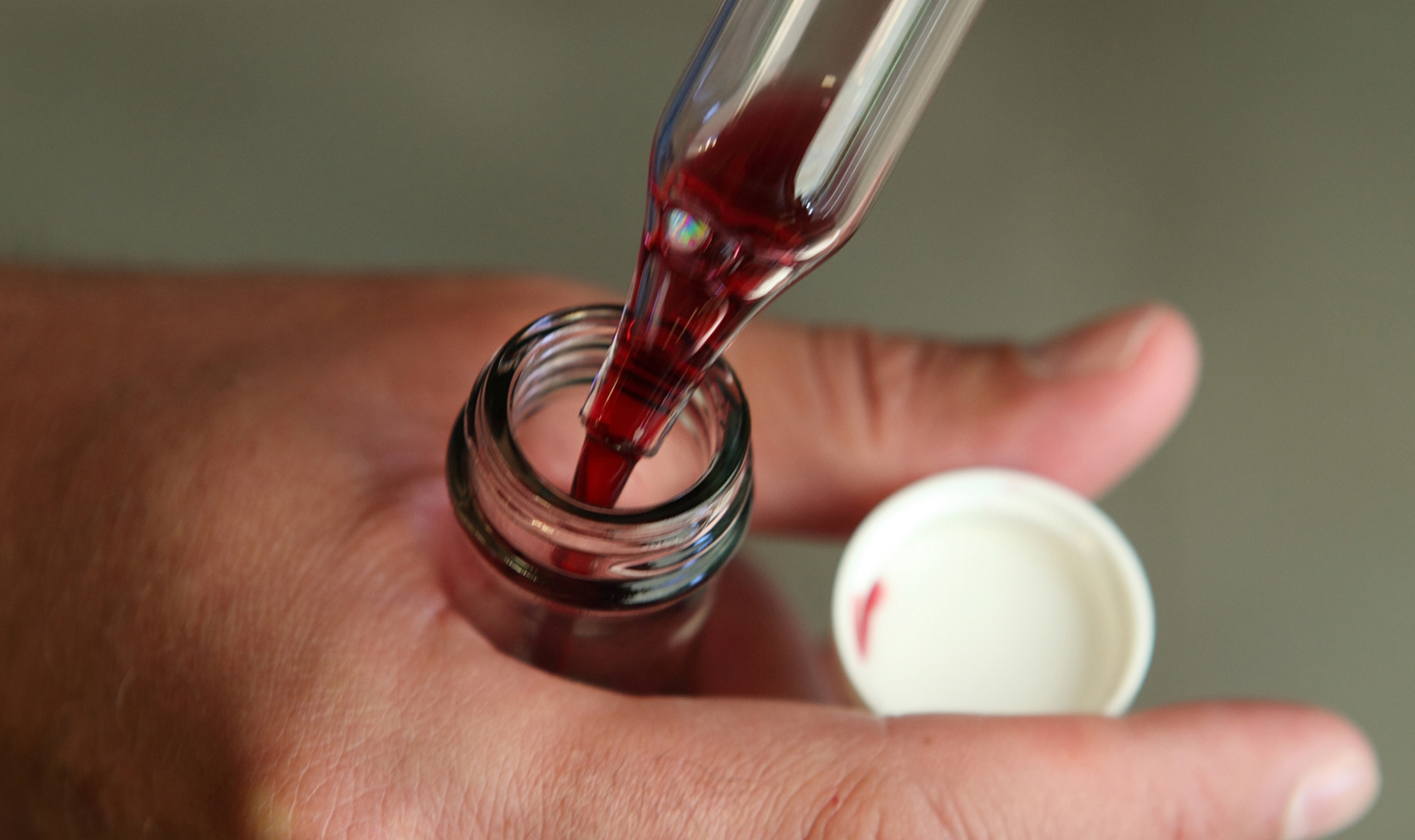
Winemaking techniques also emphasize the importance of blending. Hedonic tastings are conducted after fermentation, where the winemaking staff determines, purely by trusting their palates, which wines will comprise the Jordan Cabernet Sauvignon barrel blend—the foundation for our master blend that will be bottled. The “barrel blend” selection is created in our towering oak tanks—vessels often used in Europe but uncommon at American wineries—allowing the wine to breathe and develop a deeper complexity as the components harmonize. Our approach allows the wine to achieve even greater balance when aged in a blend of French oak barrels. A sharp focus is placed on using a judicious amount of new oak from different coopers, which keeps the tannins supple and helps retain the wine’s natural elegance and balance. After about 12 months of barrel aging, the Jordan barrel blend is reassessed to see if the oak aging helped to elevate potential lots to the starter position. Only the top lots are assembled for the master blend that goes into a bottle of Jordan Cabernet Sauvignon during summer bottling season. Vintage after vintage, no formulas are employed.
This artful blend of different Sonoma County vineyards, grape varieties, winemaking techniques, and barrels ensures every vintage of Jordan Cabernet Sauvignon maintains its hallmark elegance and consistent quality.
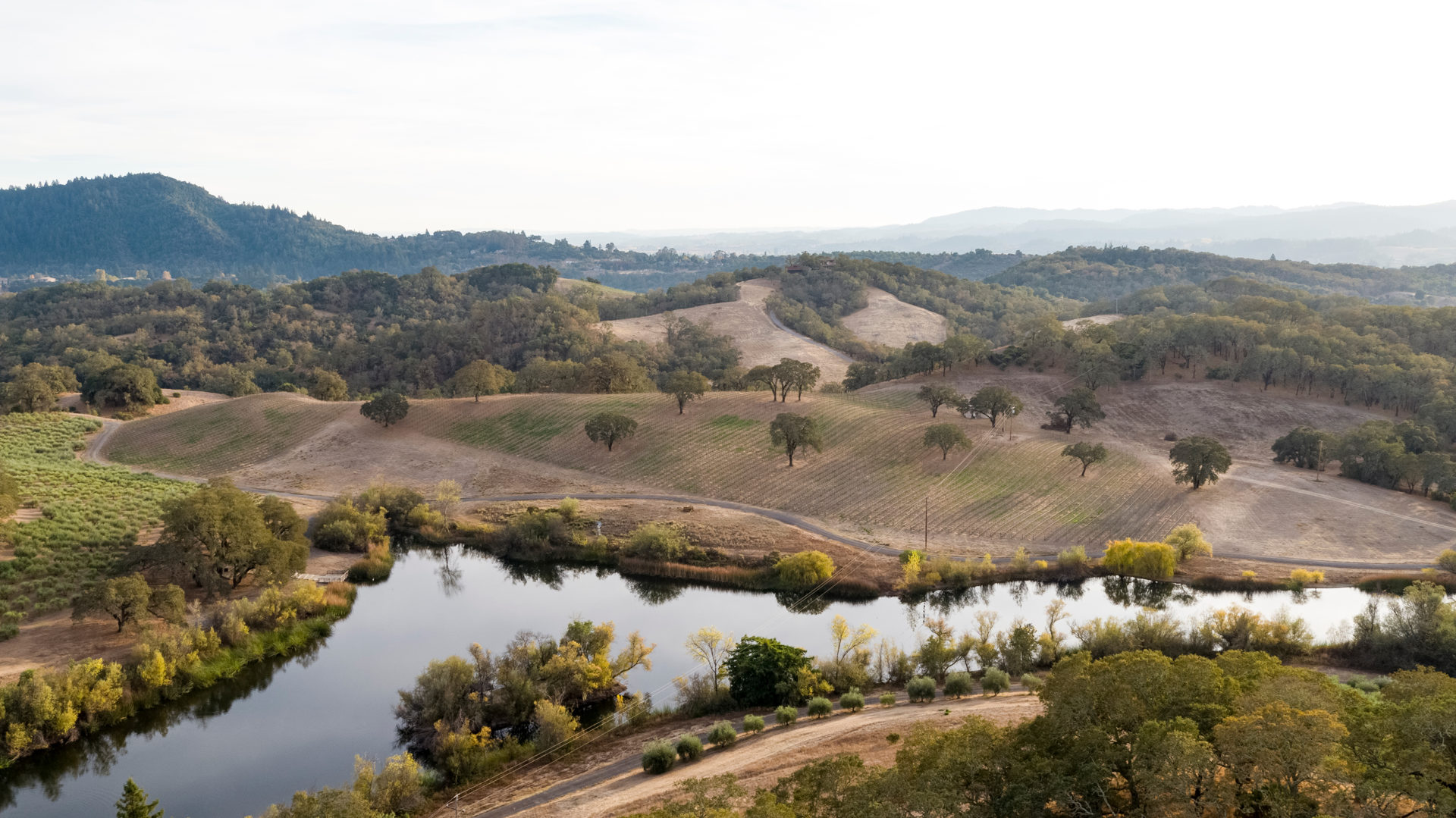
Location, location
We choose to grow our chardonnay grapes in Russian River Valley in western Sonoma County, where the cool climate, coastal fog and gravelly soils along the river allow us to emulate the crisp stone fruit, bright acidity and lingering minerality found in our inspiration wines—the great white wines of Burgundy’s Côte de Beaune region in France.
Our Bordeaux variety grapes (cabernet sauvignon, merlot, petit verdot and malbec) are grown primarily in northeast Sonoma County’s Alexander Valley, where the warmer climate, noble mountains and rocky soils combine to create the ideal environment for growing silky red wines that honor the First Growth Bordeaux of France that inspired the Jordans to become vintners. The morning fog, diverse topography and well-draining soils of the region allow us to grow grapes that achieve ideal uniformity and ripeness at lower sugar levels than the industry standard—the foundation for crafting balanced wines with lower alcohols, which are food-friendly and approachable in their youth, yet age gracefully for decades.
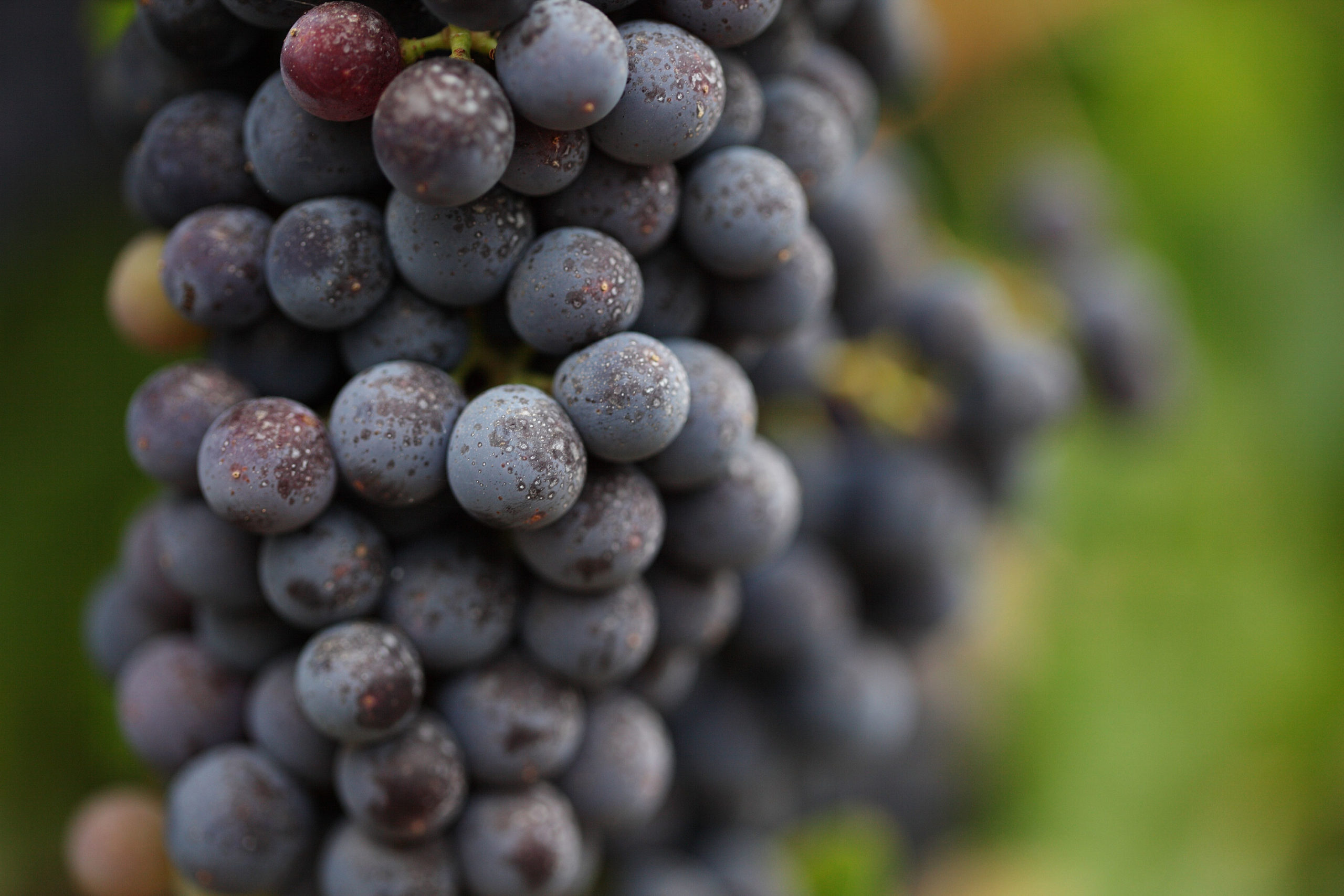
We watch the weather and are constantly adjusting the sustainable farming of the grapevines to help them grow a uniform and balanced crop. In some years, that means sacrificing grape clusters during the late spring fruit set, when the vines are carrying too many clusters to achieve intense fruit flavors. In other years, that means thinning clusters during summer veraison, when the grapes aren’t changing color evenly, which would lead to uneven ripeness and unbalanced flavors. Grapes may even get declassified and earmarked to be sold off just before or right after harvest if the flavor development isn’t as expected for our winemaking style. Most vintages require some sort of sacrifice to make a wine of greatness. Every year, we purchase about 10 percent more fruit than we will need, so there’s a cushion against quality variances. Because we pay our growers above industry standard, the only financial sacrifice is ours. We might make less wine in some vintages, but quality always comes before quantity at Jordan.
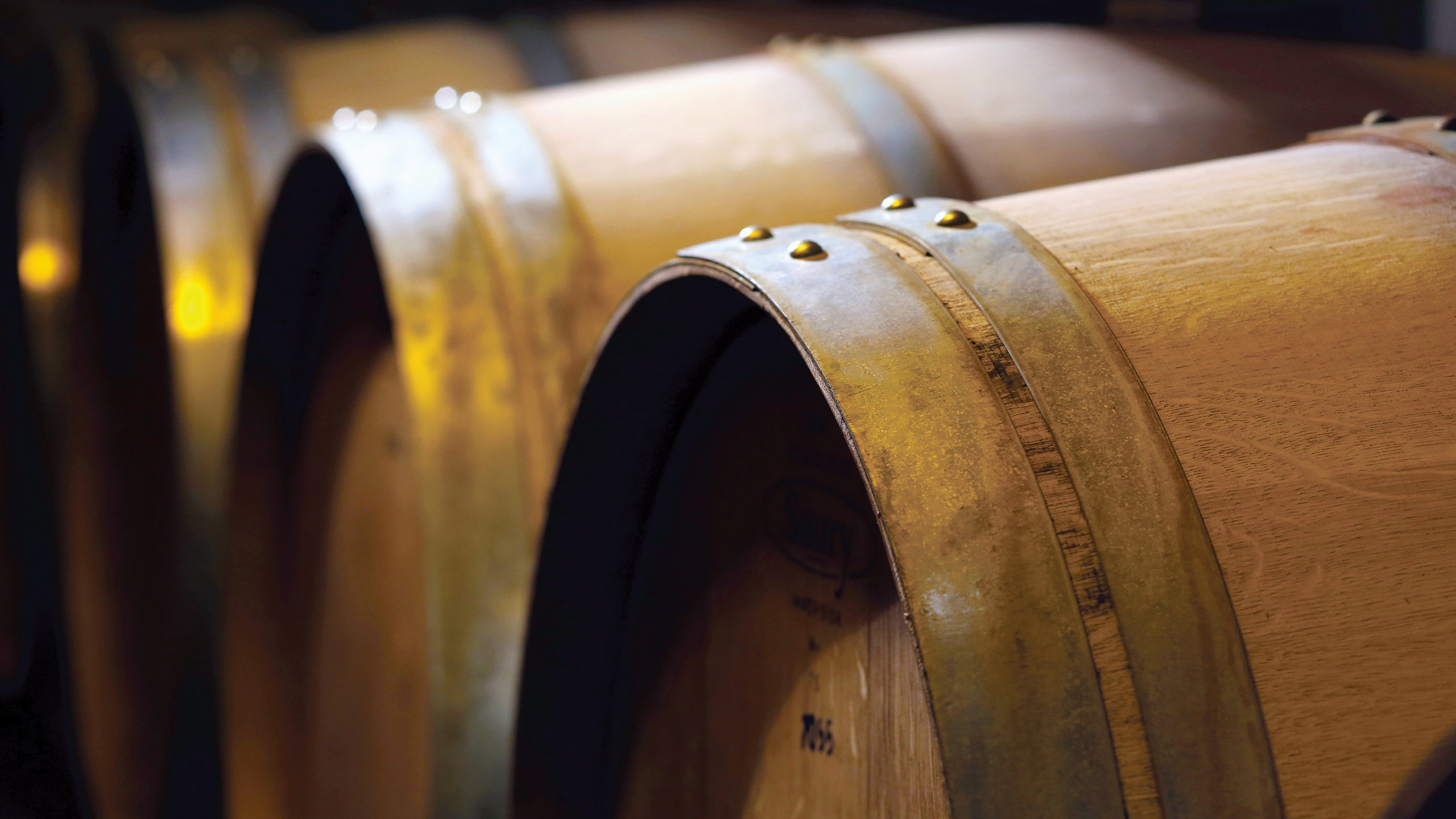
No compromise also means that our winemaker must constantly taste the young wines with an eye toward sacrificing quantity for quality. Vineyard blocks are kept separate during primary fermentation, allowing the winemaker to taste each potential component and begin to identify possible stars for the final blend. Wines are given classification ranks, and only the best survive. If mediocre tanks and barrels of wines present themselves in tastings during fermentation or before or after barrel aging, they are declassified and sold. Only the best lots earn their place inside a bottle of Jordan—which means the bottling process is second only to crush as the most critical step in winemaking. That is why Jordan only purchases the highest quality wine corks available worldwide, which cost three times the industry average. For Jordan Cabernet Sauvignon, the top 3 percent quality level of natural corks are used, as well as guaranteed TCA-free natural corks, which are currently available in limited quantities. Strict quality testing of corks occurs at the manufacturer in Portugal but continues in our laboratory, ensuring Jordan uses only the best of the best corks. This control measure is so rigorous that typically only 20 percent of the original 3 percent of corks actually earn their way into a bottle of Jordan. For Jordan Chardonnay, a sustainable technical cork, which is made of natural cork and beeswax, has been used since the 2019 vintage due to its excellent performance in multi-year experiments and its guarantee of no TCA. Our recent investment in a new bottling line that utilizes the latest technology further ensures that every vintage of Jordan bottled smells and tastes as beautiful as it did in barrel.
These are just a few of the important quality queues in our winemaking process.
